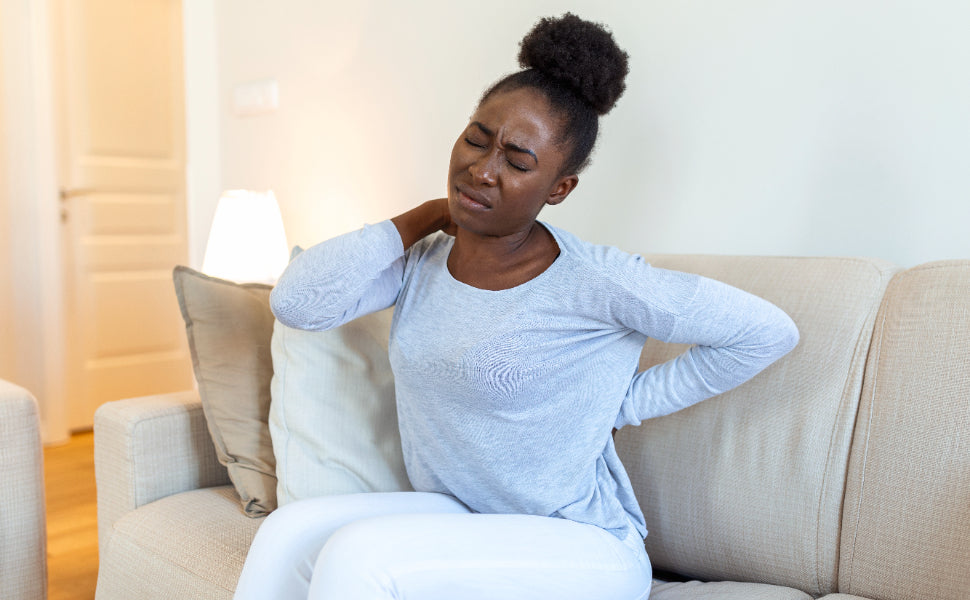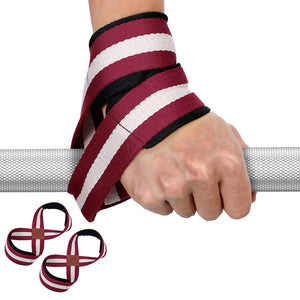What to Do for a Pulled Back Muscle?

Have you ever found yourself reaching just a bit too far while doing yard work, lifting groceries, or carrying kids – only to feel a sudden twinge in your lower back? For many people, an everyday task like bending or twisting the wrong way is all it takes to strain an overworked back muscle. You could be weeding your garden one afternoon when you feel a sharp pain in your lumbar region as you lean down. The ache becomes more pronounced with each movement. Such an occurrence is a clear sign that your back muscle needs rest and treatment. So, what to do for a pulled back muscle? Several remedies and exercises prove to be effective when it comes to this. This article explores key self-care options and preventative moves.

Muscle Strains: Overview and Symptoms
Understanding muscle strains takes priority. Muscle overstretching or tearing due to sudden movements leads to a muscle strain in back. Strains occur from activities that are done without proper form or preparation of the muscle groups. Activities like lifting heavy objects, sudden twisting, or repetitive bending can cause small tears in muscle tissue and lead to strains. Common symptoms include:
1. Pain
A muscle strain typically produces localized tenderness and aching around the affected area. Often described as a dull pain, it may worsen significantly with movement or activities that stress the injured muscle. Daily activities that usually cause no issues can now provoke discomfort.
2. Stiffness
As a protective self-defense mechanism, the strained muscle tightens reflexively. This restricted mobility makes movement and flexibility feel distinctly reduced in the injured region.
3. Spasms
Since the injury disrupts typical signaling in the muscle, back muscles may involuntarily and painfully contract without warning. These spasms can abruptly increase the baseline soreness.
4. Muscle Weakness
As the tear impairs the muscle fibers’ ability to flex and contract normally, flexing, extending, or bearing weight on the damaged area becomes difficult. Sometimes it is even impossible to do without worsening the pain. Strength and functionality diminish until sufficient healing takes place.
How to Alleviate Back Muscle Strains
What to do when you pull a back muscle? Proper care is the answer. The goal is to reduce discomfort and allow the muscle fibers to mend efficiently. By taking these simple self-care steps in the initial days after overexerting your back, you can help speed the healing process:
1. Immediately Lie Down to Rest
Lie down flat on your back. It will take the strain off the injured area and allow your torso to relax completely. Getting off your feet fully relieves compression and stress on the irritated muscle tissues so they can begin to repair without interruption.
2. Apply Ice in the Early Stages of the Injury to Reduce Swelling
Apply an ice pack for a few minutes. Do it a few times a day for the first 48 hours. The icy cold constricts blood vessels which reduces swelling that can prolong recovery. Limiting inflammation in this manner also helps control throbbing and discomfort.
3. Use Heat Application Later to Relieve Muscle Tension
After 2-3 days, once the initial swelling subsides, switch to applying a heated pack, patch, or warm towel from the dryer for 20 minutes several times a day instead of ice. Gentle warmth encourages blood flow back to the area. It promotes the delivery of nutrients and the removal of waste products to accelerate cellular mending. The heat also helps relax rigid muscle spasms caused by the injury.
4. Perform Gentle Stretching Exercises
Another top tip regarding what to do for a pulled back muscle. Perform light, supervised stretches and range-of-motion exercises that don’t stress or strain the healing fibers. This can maintain or restore flexibility once some of the initial pain and tenderness subside. Only move as far as your pain tolerance allows without worsening symptoms to avoid future setbacks.
5. Wear a Back Support for Additional Support
Wear an adjustable back support brace that provides contouring comfort and snugly hugs the lower back. It will allow you to move around, whether working from home or just doing daily chores, without having to consciously think about maintaining good posture. The brace’s built-in reminders not to slump or slouch take the guesswork out of resting your back optimally during recovery.
Recommended Exercises
Exercises promote fast recovery. While recovering from an acute back muscle strain, strengthening exercises are recommended. Perform them once symptoms start to subside. Some exercises that promote how to treat a pulled back muscle include:
1. Wall Sit
Stand with your back facing a flat and solid wall, slide your back down it, and slowly lower into a seated position as if you were sitting in a chair. Keep your feet flat on the floor. Hold for 30-60 seconds to build core and leg endurance.\
2. Bridge
Lie on your back with knees bent. Engage your glutes and hamstrings to slowly raise your hips off the floor. Do it until your body forms a straight line. Hold for 3 deep breaths before releasing down.
3. Cobra Pose
Lay chest-down with hands under your shoulders. Inhale to press your abdomen firmly into the floor and exhale to gently lift and expand your chest and head off the ground. Hold for 5 long breaths in a comfortable backbend.\
4. Child’s Pose
From all fours, sink your hips back to sit on your heels while lowering your torso between your thighs. Let your forehead or arms rest on the floor as you fully relax your back for as long as you feel is necessary.
Products Highlight: Fivali’s Back Braces and Heating Pads
The seasoned brand Fivali is committed to providing affordable, high-quality sports protection gear that supports an active lifestyle without pain. We are proud to offer a complete line for all abilities, from knee to shoulder, and now including back care items.

Two products from our line particularly support back strain recovery and prove invaluable when it comes to what to do for a pulled back muscle. Fivali Lower Back Brace with Infrared Heating Provide Back Pain Relief harnesses infrared heat therapy for penetration deep within sore tissues. The Fivali Heating Pad for Back Pain, Massage Body and Alleviate Fatigue adapts to various body parts with its flexible structure and integrated heating component. It offers soothing massage-like relief. The following table highlights their features:
|
Feature |
Fivali Lower Back Brace |
Fivali Heating Pad |
|
Wireless Use |
Yes |
No |
|
Heat Settings |
3 Levels |
3 Intensity Settings |
|
Anatomical Fit |
Secure wrap fit |
Pliable structure hugs curves |
|
Ease of Use |
Set and forget operation |
Portable for on-the-go relaxation |
|
Durability |
Durable battery and fabric |
Machine washable pad |
Overall, both products allow personalized heat application throughout rehabilitation according to the severity of the aches. Their user-friendly properties let you focus on self-care instead of complex settings.
Though uncomfortable initially, back strains are usually minor injuries that respond well to self-care. What to do for a pulled back muscle? Taking time to rest, applying cold/heat as appropriate, doing gentle stretches, and using bracing are all effective strategies that provide relief and promote fast recovery. Once symptoms ease, preventative exercises can help reinforce good posture habits and protect vulnerable back muscles going forward. Fivali’s innovative solutions provide customizable therapy to accelerate the process. Visit our website to browse all of our reliable offerings.
-
Posted in
Back pain causes, Brace, Joint, Pain, Recovery













